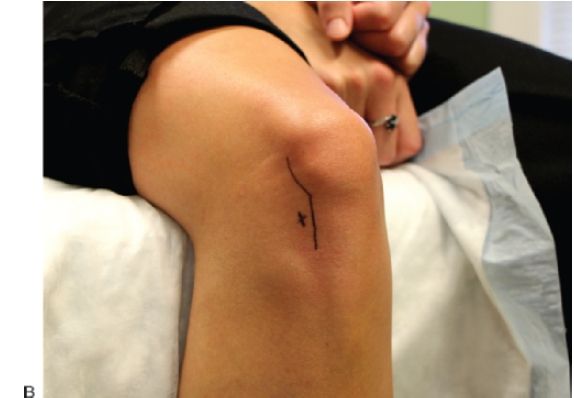FIGURE 8.24a Anteromedial aspect of the right knee with injection sites drawn

FIGURE 8.24b Anterolateral aspect of the right knee with injection sites drawn
ANESTHESIA
- Local anesthesia of the skin using topical vapocoolant spray.
- Local anesthesia and vasoconstriction of the skin and soft tissues may be augmented using an injection of up to 5 mL of 1% lidocaine with epinephrine (optional).
EQUIPMENT
- (Optional) 5-mL syringe—for injected local tissue anesthesia
- 20- to 60-mL syringe—for aspiration
- 5-mL syringe—for injection of the anesthetic/corticosteroid mixture
- (Optional) 25-gauge, 1½ in. needle—for local tissue anesthesia
- 18-gauge, 1½ in. needle—for aspiration
- (Optional) Up to 5 mL of 1% lidocaine with epinephrine—for local tissue anesthesia
- 3 mL of 1% lidocaine without epinephrine—to dilute the corticosteroid
- 1 mL of the steroid solution (40 mg of triamcinolone acetonide)
- Viscosupplementation agent of choice—if indicated
- One alcohol prep pad
- Two povidone–iodine prep pads
- Sterile gauze pads
- Sterile adhesive bandage
- Nonsterile, clean chucks pad
TECHNIQUE
1. (Optional) Use an ultrasound to image the knee joint using an adjacent, but separate, acoustic window. This allows imaging separate from the injection site so that there is no contamination from the ultrasound gel. Alternatively, the entire site may be prepped in an aseptic manner and sterile ultrasound gel utilized.
2. Create an aseptic insertion site by wiping with a single alcohol prep pad followed by two 10% povidone–iodine prep pads. Allow this site to completely dry by evaporation.
3. Achieve good local anesthesia by using topical vapocoolant spray.
4. (Optional) Using the no-touch technique, introduce the 25-gauge, 1½ in. needle for local anesthesia at the insertion site. Inject a total of up to 5 mL of 1% lidocaine with epinephrine to provide adequate local anesthesia. Deposit the anesthetic under the skin, in the soft tissues, and over the periosteum.
5. Position the 18-gauge, 1½ in. needle and syringe perpendicular to the skin with the tip of the needle directed at a 45-degree angle into the center of the knee.
6. Using the no-touch technique, introduce that needle at the insertion site (Fig. 8.25A and B).
7. Advance the needle toward the center of the knee until the needle tip is located in the joint capsule. Apply suction to the syringe while advancing the needle. The appearance of fluid in the syringe indicates that the joint capsule has been entered.
8. Multiple syringes may be required in order to drain all of the synovial fluid.
9. If injection following aspiration is elected, remove the large syringe from the 18-gauge needle and then attach the 10-mL syringe filled with the steroid solution or the proprietary syringe prefilled with viscosupplement.
10. Inject the steroid solution as a bolus into the knee joint capsule. The injected solution should flow smoothly into the joint space. If increased resistance is encountered, advance or withdraw the needle slightly before attempting further injection.
11. Following injection of the corticosteroid solution or viscosupplement, withdraw the needle.
12. Apply a sterile adhesive bandage.
13. Instruct the patient to move his or her knee through its full range of motion. This movement distributes the steroid solution throughout the knee joint.
14. Reexamine the knee in 5 min to confirm pain relief.





